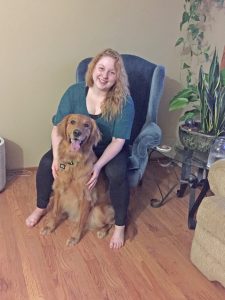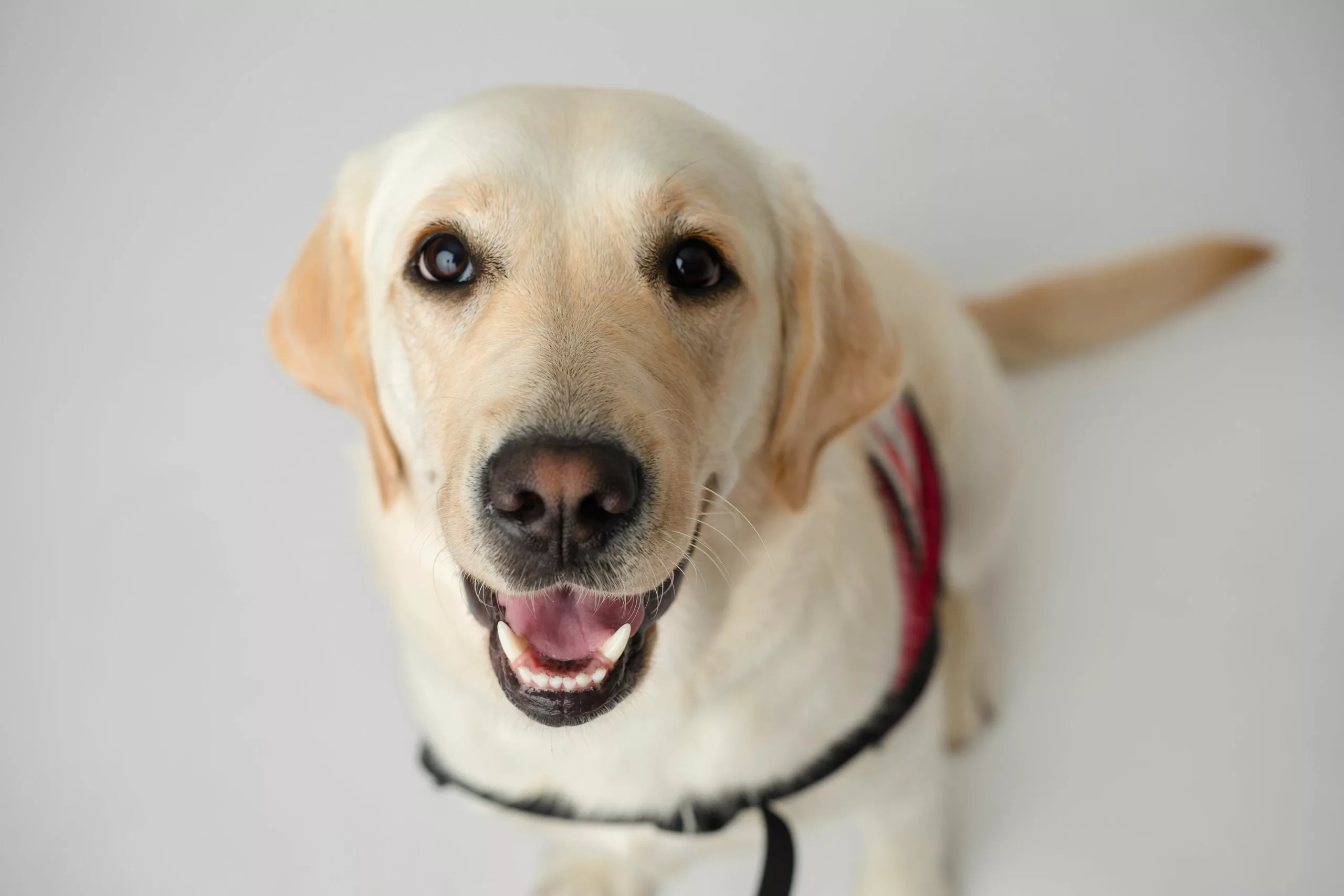Madison Stangl and Diabetes Assistance Dog Willy
 Author: MarySue Krueger
Author: MarySue Krueger
Diabetes Assist Dog Willy never made a peep during the entire time Madison (Maddy) Stangl was in training with him. That changed the night he moved into her apartment. Maddy was instructed by Can Do Canines staff for Willy to sleep in his crate for the first few nights at home until he became accustomed to his new home. Maddy recalls, “I woke up when I heard him crying in his crate. It was the first time I’d ever heard him make a sound.” She decided to check her blood glucose levels and discovered that it was a “scary low” of 46. She got some food and ate it in front of him so he would know she was taking care of herself, but Willy wouldn’t settle down until he was sure she was okay with her glucose levels returning to a safe range.
Maddy, who lives in Minneapolis, is an active young woman who walks several miles a day. She works as the Operations Lead for the University of Minnesota Physicians, living with type 1 diabetes since a bout with Influenza A at age 19, which triggered the disease. She’s worked hard to manage her condition, but still has lows every two or three days. She used to be able to detect a low when it dropped into the 70s, but now doesn’t feel them until the 50s or 60s, which could be life-threatening. Maddy’s family became concerned because she lives alone, so when her father learned about Can Do Canines, he urged her to apply for a Diabetes Assist Dog.
Maddy was matched with Willy, a two-and-a-half-year-old Golden Retriever. Willy is trained to detect Maddy’s lows before they get to a dangerous level, and then brings her glucose monitor and food to treat the low. Since that first night, Willy has been right every time he has alerted Maddy. First, he makes eye contact with an intense stare and becomes very serious, and he touches or nudges Maddy until she responds. He alerts her to highs, too. He’s even been known to stop and alert Maddy right in the middle of his favorite activities, like eating and playing ball. “I think he knows my body better than I know it. He knows what I need before I do.”
Maddy values her independence, and wanted her family to have the peace of mind, knowing she’s safe with an assistance dog. “Now,” she says, “my family has calmed down a lot. They don’t feel the need to check in as often.”
Long before Willy, Maddy saw a news story about a boy whose hometown had raised thousands of dollars so he could buy a Diabetes Assist Dog. It made her think of the adage, “It takes a village…,” because the dog was so expensive, and she could never afford one. Then Maddy found Can Do Canines, and received Willy at no cost. She says, “Thank you isn’t enough. Willy is the best and happiest thing to come from my diagnosis. Can Do Canines is my village.”
Thank you to all those who made this partnership possible:
Puppy Raiser – Jim Elmquist
Name-A-Puppy Donor – Wilma Loken
Dog donor – Amanda Brandt





